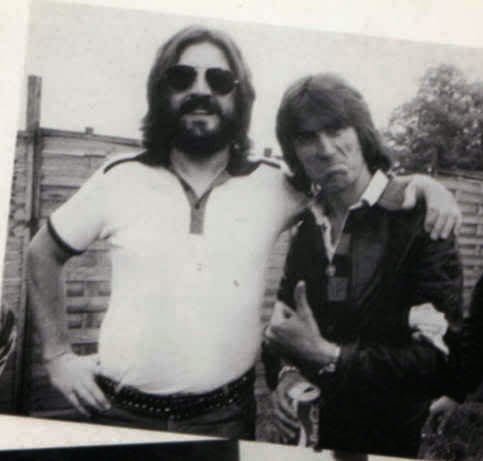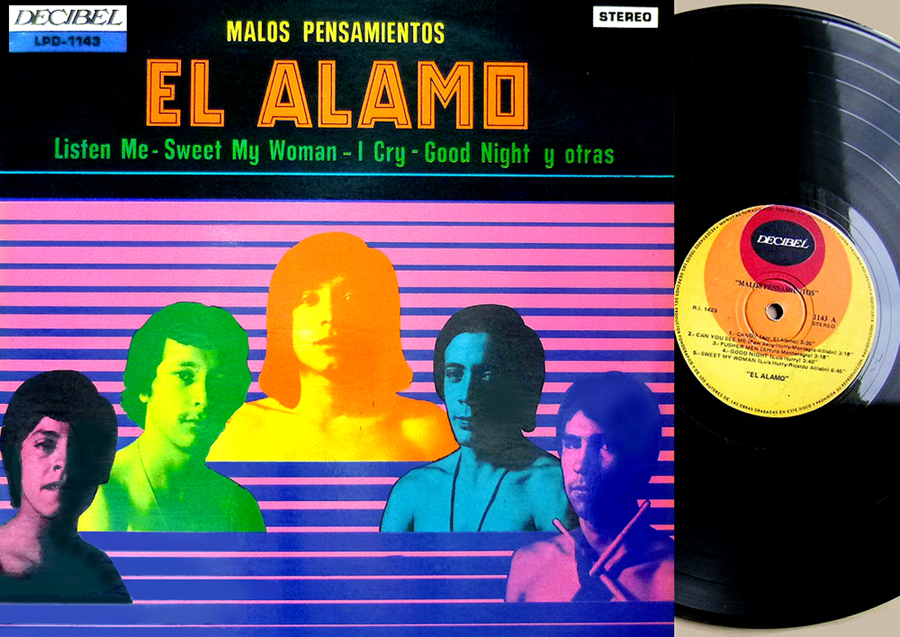Download from [
mf] or [
mg]
unzip pass:
tdatsWelcome to the big 100! Here we have a comp of songs that appear in movies. There'll be more movie-related TDATS later with different themes, as it's a subject that interests me a lot and i've been on the look out for a long time now. You may think rock in the movies is not unusual or hard to come by, but in these examples the bands and the songs are lesser-known, good, heavy, and being seen played in the movie. Finding all these together is a harder task than I realised it would be when I started! A big thanks must go to the people who helped with some of the much-needed nuggets of information at the TDATS
fb group, along with the amazing cameo lists at
60sgaragebands.comMost of the films here are generally thought of as "exploitation movies"; movies that exploit a certain fad of the times, either in movie-making in general or else in popular culture at large. One example of a genre that you may think is a good source is the (road) rash of biker flicks that were popular for a few years from the late sixties onward. I certainly did find a good amount which had some great soundtrack music, but no examples where bands appear in person. I decided biker movies deserve their own volume later.
Soon after I first posted this, somebody made this comment. "
It would be interesting to see not the songs in the movies, but the way Hollywood in general portrays "hard rockers". because it's cringing to watch. According to Hollywood, long-haired rockers are really the filth of the earth. dumber than poles, nasty and crazy.. Sad, really....stereotypes galore, "hairy biker rocker type" has become the villain everyone loves to hate."
My response was: "I agree, that is a subject that deserves a lot more attention.....there's a whole book right here. Most movies aimed at a general audience are about stereotypes though, what ever the subject. Exploitation movies especially, by definition. All the biker movies that had cool music and evil raping/murdering bikers - playing on the fact that rock did, and still does to some degree, play up to and thrive on the bad boy image."
TRACKS
Where possible I used tracks taken from the band's album or the movie's soundtrack LP. In the cases of Mystic, Luke Zane, The Bored, Atlantis, Forever More and Juicy Lucy, I extracted the audio from the best quality source (that I could get my hands on) of the movies themselves. "The Bored" suffers more than the rest from the fact that the sound quality of the movie itself was never good, and the only versions available at the moment are VHS bootlegs.
01. Mystic - The Mark Of Death (1973)
from "Horror Hospital"
02. Sorcery - Wizard's Council (1978)
from "Stunt Rock"
03. The Standells - Riot On Sunset Strip (1967)
from "Riot On Sunset Strip" and album "Try It"
04. Luke Zane - Liar (1970)
from "Ich - Ein Groupie"
05. The Bored - Night of Bloody Horror (1969)
from "Night Of Bloody Horror"
06. The Mops - Goiken Muyo (Ilja Naika) (1971)
from "Stray Cat Rock: Wild Measures'71" and Mops album "Iijanaika"
07. Atlantis - Maybe Someday (1978)
from "The Alien Factor" and 45rpm single
08. James Gang - Country Fever (1969)
from "Zachariah"
09. David Lucas & Michael Greer - Water (1970)
from "The Secret Garden Of Stanley Sweetheart"
10. Forever More - 8 O'Clock & All's Well (1970)
from "Permissive" and album "Yours"
11. The Pretty Things - Blow Your Mind (1969)
from "What's Good For The Goose" and album "“Even More Electric Banana”
12. Michel Pagliaro - J'ai Marché Pour Une Nation (1970)
from "Finalement" and single
13. Freedom - Born Again (1969)
from "Nerosubianco" (aka Attraction)
14. Juicy Lucy - Slow Down (1971)
from "Bread"
15. Moby Grape - Never Again (1969)
from "The Sweet Ride"
![Psych-Out poster Psych-Out poster]() |
| Psych-Out poster |
One of the things that makes these appearances interesting is the way they show how rock music was regarded in mainstream consciousness, or at least in that of the movie industry. The movie has been used as a vehicle for big acts from the beginning; Elvis, The Beatles, The Monkeys etc, that's common knowledge, but the counter-culture revolution of the sixties was the time for smaller bands in movies. Beat groups in light mid-'60s teen movies were a common sight, and psych bands in serious movies about the revolution like
Medium Cool were too.
Often you'll see what Hollywood's idea of a psychedelic rave is; lots of naked, body-painted go-go dancers, mop-haired revellers manically thrashing their limbs around, monged-out hippies smoking joints on the periphery and bands bathed in liquid light shows trying their best to mime to a backing track and look like they're getting into it. A pair of psychedelic exploitation movies are prime examples;
The Trip (1967) and
Psych-Out (1968), which are available on a double-bill DVD. The Trip was written by Jack Nicholson and starred Peter Fonda and Dennis Hopper, pre-dating the trio's work in Easy Rider by a year or so. Psych-Out starred Jack Nicholson (who was also in a few low-rent biker flicks at the time, as was Bruce Dern who was also in The Trip).
![]() |
| The Trip poster |
Both these films had psychedelic music sequences in Sunset Strip clubs. Psych-Out boasts the amusing sight of Jack Nicholson fronting fictitious band "Mumblin' Jim", miming guitar to a
Purple Haze-inspired riff which was in reality recorded by Colorado band "The Boenzee Cryque". In The Trip, Gram Parsons' country rockers "International Submarine Band" were
filmed in a club, but their performance was dubbed over with The Electric Flag's "Fine Jung Thing", a band which was commissioned to make the soundtrack in replacement of original contender International Submarine Band. The resulting LP was Electric Flag's first full album.
How was hard rock and heavy prog/psych represented? It came about in the lower-budget, underground movies of less mainstream appeal. Very few world-renowned heavy bands were in films in the '60s and '70s, but a young Yardbirds appeared in Michelangelo Antonioni's "
Blow-Up". As hard rock's popularity increased in the '70s, random band appearances became even less frequent, reflected by the lack of mid-late '70s songs in this volume.
![Slade In Flame poster Slade In Flame poster]() |
| Slade In Flame poster |
There were a few movies made specifically about music and successful bands, in documentary format or mock-band stories for example. Some well-known examples are The Who in Tommy and "Kiss Meets the Phantom of the Park", but these are not TDATS territory.
A good one to check out is Slade's "
In Flame" which gives an uncompromisingly honest view of the rock'n roll industry and provided more than a few queues for This Is Spinal Tap. Another is "
200 Motels", which was a surreal story that revolved around Frank Zappa's band. I have avoided those and stuck mostly to movies that had character-driven plots, in which the bands are lesser-known and appear in a few scenes, like Moby Grape in "
The Sweet Ride" and The Bored in "
Night Of Bloody Horror", or had more central roles as characters in the plot like Forever More in Lindsey Shonteff's "
Permissive" and Sorcery in Brian Trenchard-Smith's "
Stunt Rock". There are a few examples here of music that was performed by musicians that did not make up an existing band but were brought together for the sake of the film, like Mystic in "
Horror Hospital" and the band in "
The Magic Garden of Stanley Sweetheart".
![The Litter in Medium Cool The Litter in Medium Cool]() |
| The Litter in Medium Cool |
An interesting side story, and one which exemplifies the industry's sometimes fickle treatment of the rock bands themselves, is Haskell Wexler's
Medium Cool. Excellent heavy psych band The Litter performed a full set for a
club scene, only to have music from Frank Zappa's debut dubbed over the top in the finished movie. I contacted The Litter singer Zippy Caplan and unfortunately he cannot remember or recognise which song they were actually playing in the scene. There is a live Litter EP floating around on various archival releases which is all the tracks they recorded during the shoot. I had an idea to dub it back over the footage but I was unable to visually match any of the songs up as the flashes of the band are too brief . So it seems we'll never know now.
![Horror Hospital poster Horror Hospital poster]() |
| Horror Hospital poster |
So let's get down to (movie) business, and track 1 of this volume.
Horror Hospital is an English movie made in 1973. It was directed by
Antony Balch, who is most well-known for this movie and some collaborative work with William S. Burroughs, with whom he always dreamed of bringing “The Naked Lunch” to the screen, but never did. The lead role is played by
Robin Askwith, who is most famous for the “Confessions” series of sex comedies, and he still has roles in UK TV shows now. In the movie a disgruntled song writer goes for a break with a hippie-themed travel company “Hairy Holidays” and finds out the true intentions of the mad doctor who uses it to lure young people for his ominous uses…
The band shown in the film, which you can hear our protagonist Jason complaining about for using a song of his without credit, is rumoured to be three guys from UK pop/psych group Tangerine Peel: Warwick Rose (Bass), James Gaynor (Guitar) and John Warwick (Drums). The song 'Mark of Death' was written by Warwick Rose under the pseudonym “Jason deHavilland”.
I found an unsubstantiated claim on an internet forum that The Mark Of Death was released on a single b-side under a different band/song name, but haven’t been able to establish the truth of this yet. Some cursory searching revealed that Warwick Rose was involved in a number of acts after Tangerine Peel, like Ro Ro and Warwick, in which Alan Ross (Ex-Tangerine Peel) had some involvement also. Alan Ross had a complex post-Tangerine Peel career too, but I have not found any clues as to whether the postulated b-side was on any Rose, Warrick or Ross related singles…
![Stunt Rock poster Stunt Rock poster]() |
| Stunt Rock poster |
In 1978 English/Australian director Brian Trenchard-Smith had the idea to sell a movie using the appeal of death-defying stunts mixed with rock music. He already had experience of making stunt documentaries, and chose Australian stunt man Grant Page as the star, who he’d worked with before. He travelled to the US and found a band. Almost recruiting Foreigner, he eventually made a deal with Los Angeles hard-rockers Sorcery, who had already developed a bombastic stage show of their own involving demons and wizards, and had been supported by the then up-coming band Van Halen.
Sorcery was made up mostly of musicians that had connections with show business and also did session/jingle work, although they were a bona-fide band, headlining their own shows. Lead guitarist/keyboardist and main song writer Richard Taylor had also played with Legs Diamond (see
Vol29) Their stage show incorporated battles between costumed wizards which were complemented by extravagant stage effects and set-pieces. The movie has a thin plot which is used to hold together what is effectively a feature-length montage of quality hard rock, amusing stage antics and heroic old-school
stunts. Something to get the Beavis and Buttheads in us all whooping with pleasure!
Sorcery’s efforts were cut on two LPs during their existence, which ended in 1987: Stunt Rock, and the soundtrack to 1984 slasher movie “Rocktober Blood”. The latter was a far inferior effort which apparently only had three proper Sorcery-written tracks, none of which were quite up to the standard of Stunt Rock. The quality of Stunt Rock’s music proved they had potential, and one wonders where they could have gone if they had wanted to escape the shady world of soundtrack work and become a proper signed band. There is an ancient official website
here on which some DVDs and CDs of Sorcery rarities were available but it has not been updated for years.
![Riot On Sunset Strip poster Riot On Sunset Strip poster]() |
| Riot On Sunset Strip poster |
1967’s “Riot On Sunset Strip” is one of the first and defining counter-culture exploitation movies. It was rushed for release within 6 weeks of the Sunset Strip curfew riots which occurred in late 1966. Club-going revellers who were frequenting the strip in larger and larger numbers were getting the goat of local residents and businesses by amassing on the side-walks, making noise and holding up traffic. Police were patrolling the area in larger numbers as a result, and inevitably friction occurred between the opposing sides.
It came to a head one night during a protest against the authorities’ plans to control the situation by forcing closure of one of the central coffee houses, Pandora’s Box. Revived from years past, the kids had been subjected to an archaic curfew law banning under-18s from the main drag after 10pm, and a rally about all these things was arranged for November 12 1966. Over 1000 young people attended the march and the strip ground to a standstill amid sign-waving and verbal protests. It’s suggested that the violence started after a car full of off-duty marines didn't take kindly to being held up and started throwing punches. It ended with a city bus being ransacked, rocks and missiles thrown at the police and multiple arrests. One of the detained was Henry Fonda, and Jack Nicholson was another attending representative of the Hollywood set.
The Standells and
The Chocolate Watchband are two bands that performed as themselves in Riot On Sunset Strip, and the title track for the movie by The Standells is what I have included here. It’s one of the seminal garage punk songs, with the spirit of punk in every part of it, from the simple but unforgettable riff to the snotty, chanted vocals. There are two interviews
here at the great Psychedelic Baby webzine that have some comments about making the movie from members of both The Standells and The Chocolate Watchband.
![Ich - Ein Groupie DVD cover Ich - Ein Groupie DVD cover]() |
| Ich - Ein Groupie DVD cover |
Moving across the pond to Europe now, we have an exploitation movie called "
Ich - Ein Groupie". This time it comes from the perspective of a female rock groupie, played by German actress/comedienne Ingrid Steeger. Her character travels around Europe on the trail of English band
Luke Zane, because she believes she has fallen in love with the singer, Stewart West. On the way she descends into the usual excesses of drugs, lustful desires of rock musicians, devil worship and Swiss biker gangs.
Ingrid Steeger became a household name in the mid '70s due to her success in German TV comedies, the first one being a sketch show called
Klimbim (Trans: Odds & Ends). Soon after, her past activities in naturist magazine photo shoots and cheap pornographic 8mm movies, as well as more professional soft material like "Ich - Ein Groupie", was revealed when distributors attempted to cash in on her fame by releasing them anew. She successfully took legal action to block them, and the public didn't take offence to her past. Her third TV series with director Michael Pfleghar (with whom it was later revealed she'd had an affair while married to a cameraman) flopped and her career nosedived. She remained well known but in parody. Her notoriety became the tabloid press kind, with stories of career failures and relationship strife, punctuated with occasional appearances in TV and theatre. After reaching a very low point in the last decade, in which she was living off unemployment benefits, the story has brightened and she has regained some professional acceptance and success in the theatre.
This movie is a bit of goldmine, as it has no less than three early and obscure hard rock bands playing in it (plus other genuine acts playing other styles), two of which have appeared in TDATS comps already; Birth Control and Murphy Blend. I chose to use the band who appear in the opening scene, credited as "Luke Zane". This is the band who's singer Ingrid's character falls for, and they play a bluesy hard rock song which I guess is called "Liar" as this is the main lyric. I have attempted to find out if "Luke Zane" has any connection to real bands, but have drawn a blank so far. Birth Control (see
Vol3 &
Vol73) plays "
No Drugs" from their debut LP and Murphy Blend (See
Vol73) have an
unidentified jam in an Amsterdam club.
From one of the worst films included in this comp comes a very obscure nugget of heavy psych, but luckily the movie is of the “So bad it’s Good” variety.
The Bored play for a full 4 and a half minutes in the club scene in 1969's “
Night Of Bloody Horror”, during which the anti-hero of the movie hilariously gets beaten up on the dance floor without anyone noticing. The film was an ultra-low budget slasher and the plot is an unashamed “Is he/Isn't he the killer?” Psycho rip-off about a guy who suffers from blinding blackout head-aches and an oppressive, controlling mother. The lead role of Wesley is played by Gerald McRaney, who may be known to US TV viewers as Maj. John D. 'Mac' McGillis in early-'90s TV series "
Major Dad".
![Night of Bloody Horror poster Night of Bloody Horror poster]() |
| Night of Bloody Horror poster |
The scene in which we are interested is where our protagonist is sitting in a bar. As usually happens in these movies, luckily for us, the camera turns to a rock band for a few minutes which has absolutely nothing to do with the plot. In this case we can see the band’s kick drum inscribed with the name “The Bored”, and they churn out a heavy dose of swampy-riffed, rhythmic psych, howled vocals and swirling keys. Unfortunately the sound quality of this movie is terrible, with ancient VHS reproductions being the only versions available at the moment on DVD, but maybe that suits the band fine in this case as the sludgy sound gives it an almost modern edge, boy I’d sure have liked to see this band live back in the day. If what we see here can be relied on, I think they could have held their own in a stoner-rock gig even now.
Nothing is known or documented about this gone-for-ever band, except for a few comments that I found on a forum which I hope are all true. Apparently the members were Jay W (on bass), Toad, BJ and Bobby. They came from New Orleans where they used to get together in a bar called The Gunga Den, and at some point they supported Vanilla Fudge. Much later on Jay W. emigrated to Australia. Let’s hope something else comes up and I’ll certainly be doing my best to get some more facts…
For track 6 we move onto a Japanese movie. It is part of the “
Stray Cat Rock” series, which was a set of 5 films made between 1970 and ’71. As many of the movies in this comp, they were exploitation movies, but their country of origin gives them a very different feel. Something that stands out is the style and quality of their execution. Urban Japan of the early seventies, in the cool hues that these films use, looks sleek and modern, even by today’s standards. Of course, the stories themselves were just as silly and nonsensical as most exploitation movies.
![Wild Measures '71 cast Wild Measures '71 cast]() |
| Wild Measures '71 cast |
“
Pinky Violence” is a term used to describe the genre that these movies are associated with, which has been defined elsewhere as “sexed up, bad girl action films by the
Toei studios.” It is true that all the Stray Cat Rock movies have strong female leads. The first in the series, “Delinquent Girl Boss”, is about an all-girl biker gang. The combination of director Toshiya Fujita and actress Meiko Kaji would go on to greater cult-acclaim with 1973's "Lady Snowblood", which is cited as a major influence on Quentin Tarantino's "Kill Bill".
Through most of the films there are appearances by real Japanese music acts of the day, which are generally not of much interest to TDATS, with one exception being a band called
The Mops. The clip I have used is from the final instalment of the series, “
Wild Measures '71” ( also known as “Crazy Rider '71”, “Beat '71” or “Bôsô shudan '71”) and at one point The Mops appear randomly on the back of a flat-bed truck, seemingly in the middle of a tense part of the plot involving a sniper and organised criminals. They play their hilariously quirky piece, and drive off again just as quickly as they appeared while an amused group of on-lookers wave them off, and the bemused criminals scratch their heads, crazy! The song is great fun while still being pretty heavy, and can be found on The Mops' third album “Iijanaika” (1971).
![The Alien Factor VHS cover The Alien Factor VHS cover]() |
| The Alien Factor VHS cover |
I thank fellow rock obscurity enthusiast Adam Kriney, drummer in
The Golden Grass, for the next piece of low-budget fun. In a great example of how these things can turn up in the least-expected places, a Maryland band called
Atlantis appears in a Baltimore bar scene in monster slasher movie “
The Alien Factor” (1978) and plays an entire song.
Now it seems to me there’s a few reasons why directors may choose to do this. Is it a good way to pad out a few minutes of reel for the easy amusement of drive-in crowds? I’m sure it is. If you can’t afford to catch the zeitgeist with a popular band, why not use one that’s willing to offer it’s services for free in return for a little celluloid immortality.
Here’s some more info on Altantis that I patched together from a few internet sources: “The Who-like ‘Maybe Someday’ is a little-known garage single from a Baltimore band later known as The Lon Talbot Group.
![Atlantis "Maybe Someday" 45 Atlantis "Maybe Someday" 45]() |
| Atlantis "Maybe Someday" 45 |
It appeared in the
Don Dohler, sci-fi/horror flick The Alien Factor. The flipside ‘Moby Shark’ is a novelty fuzztone garage tune with wild stereo effects with lyrics that parody the ‘Jaws’ movies of this era. Singer/Songwriter Lon Talbot (David Aquino) recorded and gigged through the 70's as Atlantis, with various line-ups. They usually performed as a power trio, playing both original music and covers of the early British Invasion/Mod bands like The Who, The Kinks, The Yardbirds and Manfred Mann.
The single was released around the same time as the film, receiving some college radio airplay, especially on Towson State University's WCVT. In the early 80's the band became ‘The Lon Talbot group’, and played in Baltimore's early new wave scene in clubs like The Marble Bar and No Fish Today.”
![Zachariah poster Zachariah poster]() |
| Zachariah poster |
The James Gang wrote two songs for 1971’s ‘Electric Western’
Zachariah, and they appear in the movie playing both. The one I have chosen here is ‘
Country Fever’. It’s a fantastic hard rocker. In my opinion easily one of the best that The James Gang ever made. Neither of the songs appear on a James Gang album, but both are on the soundtrack LP and Country Fever was included on a best-of collection. ‘Laguna Salada’ is played by the band in the
opening scene, and it certainly has a Wild West feel. The image of the band rocking out in the desert while our hero Zachariah (actor John Rubenstein) practices his gun-slinging is a striking and memorable one.
A couple of other interesting musical footnotes in this movie is the appearance of jazz drummer Elvin Jones and film composer Michael Kamen when he was a member "The New York Rock n Roll Ensemble". The whole band play in a bizarre scene where Zachariah beds a girl while surrounded by the naked band
as they play. In fact the whole film is quite bizarre, one of those ones where you definitely won't get very far if you wonder what's going on or why any of it is happening, you just have to go with it. The other lead role in Zachariah is played by Don Johnson of Miami Vice fame. A few of his early roles were in exploitation movies, including “
A Boy And His Dog” which was a great post-apocalyptic sci-fi that I've have liked for a long time. More on Don Johnson for the next track…
![The Magic Garden of Stanely Sweetheart poster The Magic Garden of Stanely Sweetheart poster]() |
The Magic Garden of
Stanely Sweetheart poster |
His first big screen role was in “The Magic Garden of Stanley Sweetheart“, a counter-culture exposé which had some cool music scenes in it. Andy Warhol himself referred to the film as "the quintessential, most truthful studio-made film about the '60s counterculture". The song I have used is from a drugged-out party scene about half-way through the movie. It shows a band playing a groovy psychedelic song called "Water", with one of the story’s characters singing in the anonymous band. From what I can gather this song was written by composer
David Lucas and sung by actor/comedian Michael Greer who played the character of Danny.
Michael is remembered as being one of the first openly-gay actors in Hollywood (although not part of his character in this movie) and his great acting skills were limited to obscure movie roles as a result. He was apparently a talented singer/keyboard player too. The soundtrack LP for this movie had some other interesting tracks on it, including Crow (see
Vol60) and “Eric Burdon & War”. This movie was recommended to me by Johnny of
The Admiral Sir Cloudesley Shovell, thanks man!
![Permissive poster Permissive poster]() |
| Permissive poster |
Next up is a Scottish band that has appeared in TDATS before,
Forever More (see
Vol25). After two albums they would morph into The Average White Band, but before that they played the role of the band at the center of 1970’s groupie exploitation film "
Permissive". This movie is a desolate account of the relationships and dramas of the groupie girls that cling on to a travelling rock band. The sometimes graphic scenes are at times on the verge of soft core pornography but the real theme of the film is the hopeless and pathetic life of the girls that choose the life of groupies, competing for the affections of their favourite band members, while being taken advantage of by others in the business.
The song I used is “8 O'Clock & All's Well”. This was a track on Forever More’s first album, 1970’s “Yours”, but I chose to lift the audio out of the movie as they recorded a version for it which is faster and harder than the LP.
![What’s Good For The Goose poster What’s Good For The Goose poster]() |
| What’s Good For The Goose poster |
UK band
The Pretty Things, who developed from a mod/r&B group into a psychedelic rock band, played a couple of songs in a club rave-up scene the UK sex comedy “
What’s Good For The Goose”. The movie starred famous English slapstick actor Norman Wisdom, whose popularity was well-past its peak by the time it was made in 1969, in fact it was his last ever big screen role. It’s an awkward but endearing attempt to mix Wisdom slapstick, carry-on style sex farce, teen counter-culture and midlife crisis apologia.
The Pretty Things show up a few times, at the center of the hippie mob who descend on seaside town Southport at the same time that Norman Wisdom is driving there for a business conference. On the way he is cajoled into picking up a couple of free-spirited hitch-hiking girls, who are young enough to be his daughters. They show him a few things which disrupt his stayed life as a typical 2.4 children commuter dad.
The Pretty Things had a secret life as “The Electric Banana”, which was the name they used to record a number of library music records for De Wolfe Music, a company that syndicated recordings worldwide for commercial use in film, television and radio. Some say this was a purely money making exercise to help subsidise their ailing career and lessening record sales. The music appearing in What’s Good For The Goose was on the third of five E.B. records, “Even More Electric Banana”. Julian Cope wrote an extensive review of the album on his web site
here.
![Finalement soundtrack LP Finalement soundtrack LP]() |
| Finalement soundtrack LP |
Singer/guitarist
Michel Pagliaro was the first Canadian artist to score top 40 hits on both the anglophone and francophone pop charts in Canada. He appeared in the movie “
Finalement...”, in a dance club scene playing the song “J'ai Marche Pour Une Nation” (I Walk For A Nation). This was originally a single of his in 1969. The movie appears to have been a fairly unremarkable romantic comedy (I may be wrong as I haven’t been able to see the whole thing, and it’s in French), but the song is an excellent slice of catchy pop rock with a wicked hard rocking riff. Michel was also in Montreal bands Les Rockers, Les Chanceliers and Ouba. There’s lots of commentary on this hard-to-find film
here, in French.
(aka ‘
Attraction’ worldwide), is an avant-garde film from experimental Italian director Tinto Brass. It was filmed in London and Tinto commissioned an English band to make the soundtrack. He chose
Freedom, which had connections to a few other notable bands,
Clark Hutchinson by bassist Walt Monagan (see
Vol74), and Procul Harum by singer Bobby Harrison (see
Vol57). Bobby Harrison (who had a later solo album that I intend to use in later vols) and early Freedom member Ray Royer had both been in the original incarnation of Procol Harum for their début 'Whiter Shade Of Pale', but were ejected soon after for Robin Trower and Barry Wilson.
What became Freedom’s first album, Nerosubianco (Black on White), was the soundtrack. I have chosen a track called Born Again. The band appeared playing it in the movie, one minute on an open top bus driving through London, then on a horse and cart. This song carries on into a surreal scene of scientists studying sexual activity. It’s a great psych track which verges on hard rock towards the end, and Freedom changed drastically on their second album to go in the direction of heavy blues rock.
![Bread press book Bread press book]() |
| Bread press book |
Juicy Lucy was a short-lived commercial blues band that counted Mick Moody in its ranks, later of Whitesnake and other acts. The band was started by The Misunderstood (See
Vol62) members Ray Owen, Glenn Ross Campbell (Steel guitar) and Chris Mercer (saxophone).
They appeared in a movie called Bread, playing at an outdoor gig. The movie was recently restored and re-issued by the BFI as a special feature with “Permissive”, mentioned previously with Forever More. Paul Williams puts on a great vocal performance, he was the second singer for the band after Ray Owen left for a solo career. Two bands play for the home-made festival at the end of the film, Crazy Mable, and Juicy Lucy, who got involved through screen writer Suzanne Mercer’s marriage to Chris Mercer, the band’s sax player. A band called The Web also played, but did not make it into the cut of the movie that is now available.
Here is a minor adaptation of the BFI’s comments on the movie: “Five hippies pitch their tent in the grounds of a young aristocrat's estate. They end-up there unwittingly, thinking it’s a suitable camping spot for an over-night stay while hitch-hiking home from the Isle of Wight festival. During the festival they were upset by the profiteering surrounding it and their minds are on ways to make money from a similar endeavour but in a more hippie-friendly way. The aristocrat befriends the group and accepts their offer to paint his house while he is away. The group decides to use the grounds to stage a pop festival.
An unusual mixture of pop festival documentary and saucy teen comedy, Bread was exploitation filmmaker Stanley A. Long's second attempt at what he called a "counter culture gimmick movie". His first, Groupie Girl (1970), produced by Long, was based upon the real-life exploits of the film's co-writer, Suzanne Mercer. Her encounters with rock musicians, as salaciously filtered through the distinctively seedy vision of director Derek Ford, had given Groupie Girl the grimy ring of truth, and the film made a lot of money. Unfortunately, despite its title - contemporary slang for cash - the more light-hearted Bread did not.”
![Groupie Girl (aka I Am a Groupie) poster Groupie Girl (aka I Am a Groupie) poster]() |
Groupie Girl poster
(aka "I Am a Groupie") |
I considered the movie
Groupie Girl for this comp, and there was a
soundtrack LP made. It contains music from real bands
Opal Butterfly,
English Rose and Virgin Stigma. The history of Opal Butterfly recounts that Lemmy of Motörhead was a member for a short time in his pre-Hawk
VVind days, as mentioned in his autobiography "White Line Fever", but this was before the movie. Opal Butterfly did not appear in the film, they just provided the theme tune and background tunes, although singer Ray Majors did have a cameo. After a bit of searching it seems that Virgin Stigma were made up for the movie. They were part of the plot and appeared playing in one scene,
in a studio.
The film was a tale similar to Permissive, but in this case the story of only one groupie, rather than a competing entourage. English Rose was a short-lived London band that later included Neil Peart, when he was living in the UK before Rush existed. Neil mentions this briefly on his website
here. Their contributions to the soundtrack, "Yesterday's Hero / To Jackie", were released on a
single. The music for Groupie Girl wasn't of much relevance to TDATS, but it may show up again later.
The first century TDATS comes to an end, and it's been a sweet ride.
Moby Grape close proceedings. They appeared in the surfer-biker-psychedelic exploitation movie
The Sweet Ride, playing the great song “Never Again” at a Sunset Strip nightclub called The Tarantula. Thanks for watching, stay tuned for more! Rich
![The Sweet Ride poster The Sweet Ride poster]() |
| The Sweet Ride poster |
Share via:


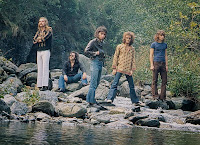

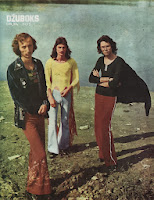
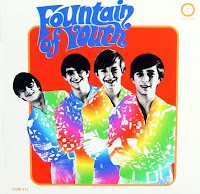
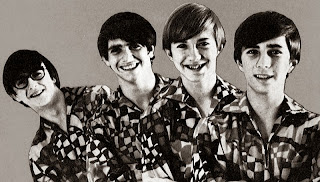
.jpg)
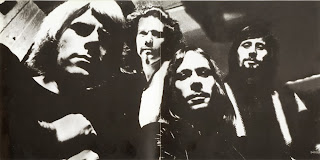


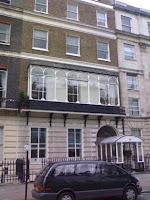
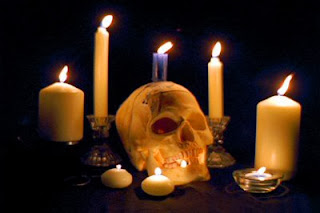


.jpg)














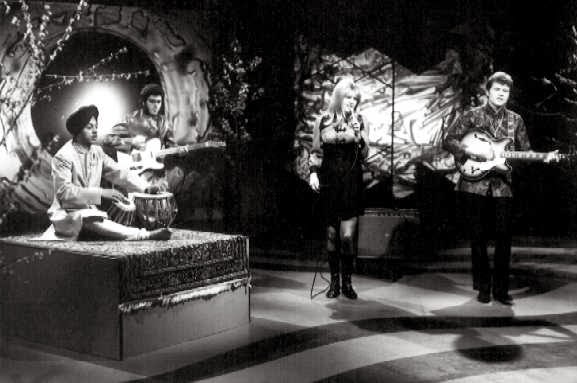























.jpg)
.jpg)




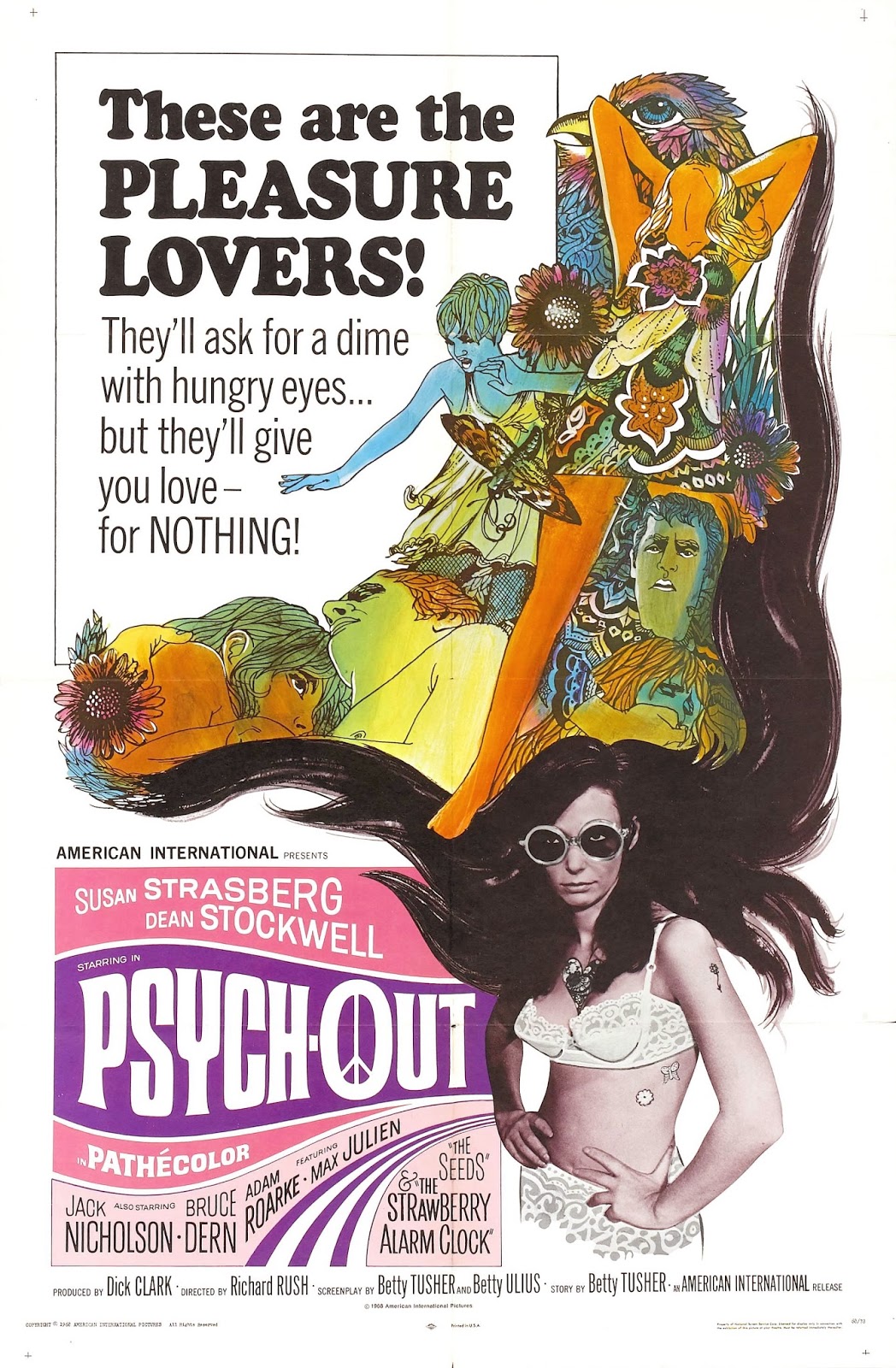

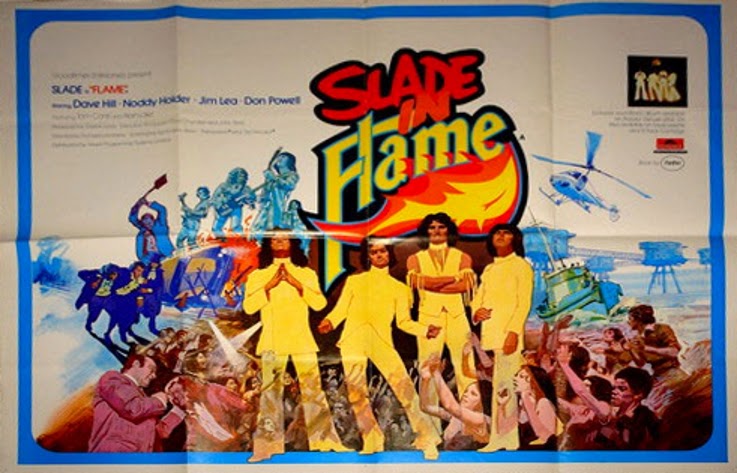







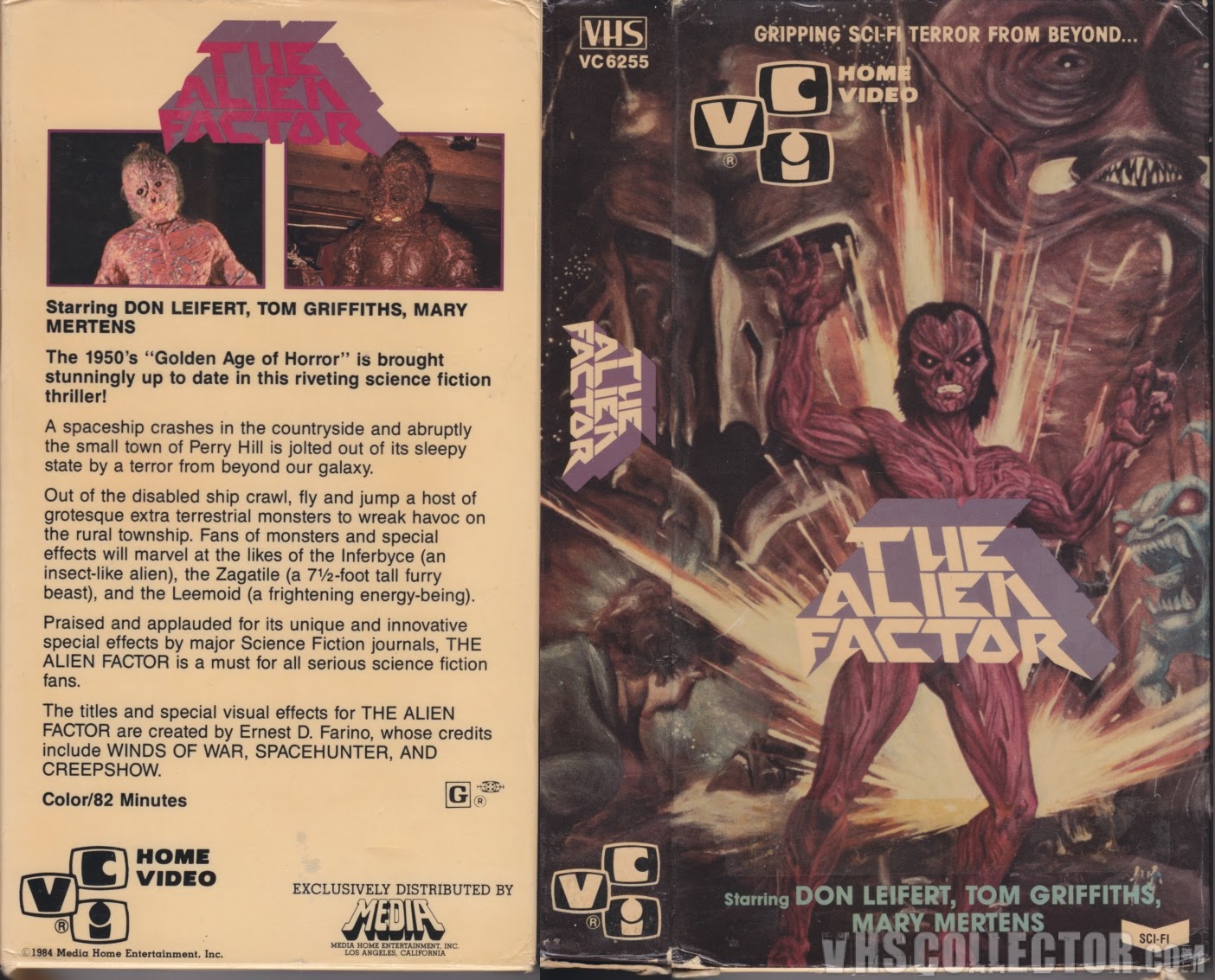




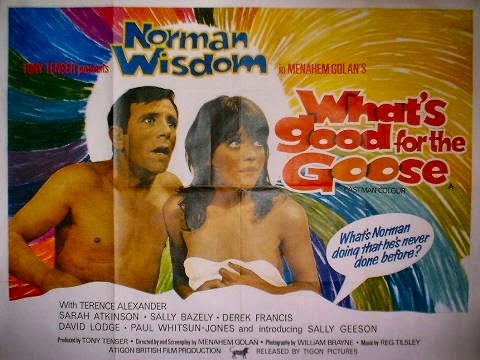
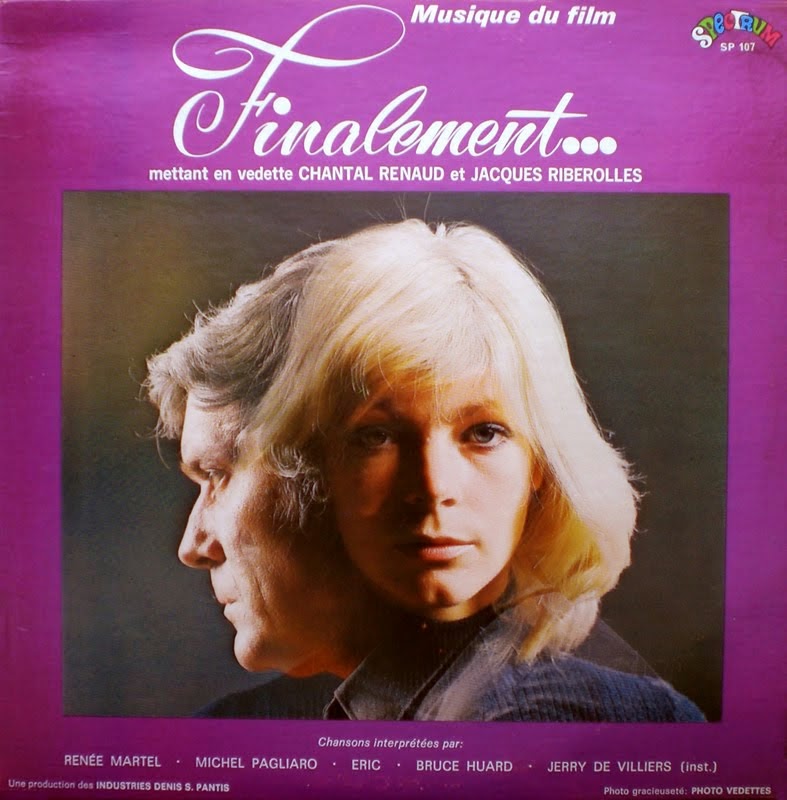

+poster.jpg)

















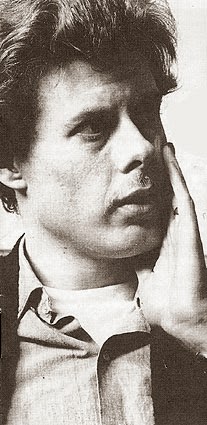
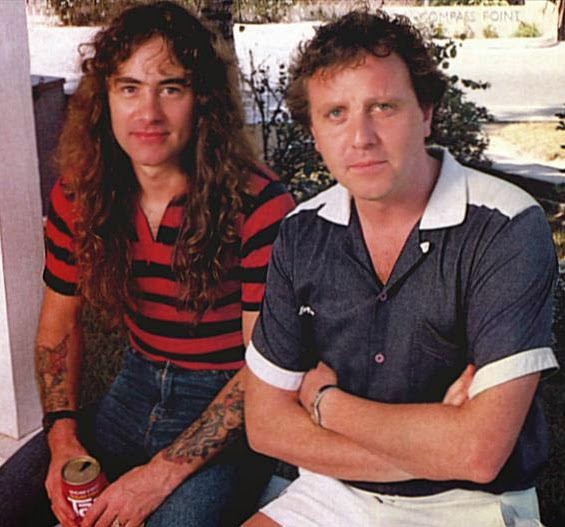.jpg)





